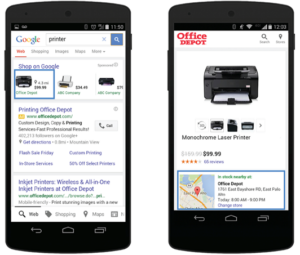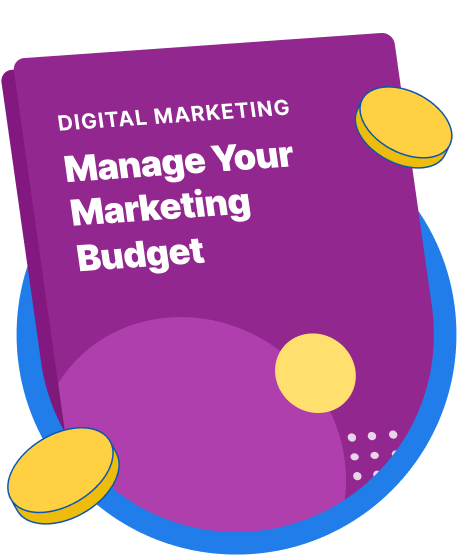-
 5 min. read
5 min. read
-
 Rohan Ayyar
Rohan Ayyar Content Writer
Content Writer
- Rohan Ayyar dons multiple hats at E2M, a premium digital marketing agency where he takes campaigns from the drawing board to lessons-learned blog posts. Rohan is also an avid business blogger, with posts featured on Fast Company, MarketingProfs, and Entrepreneur. Follow him on Twitter @searchrook.
All new digital technologies or platforms that come along bring with them an overarching “flavor of the season,” which leaves its indelible mark on nearly every marketer’s strategy. 2015, for example, was the year of mobile. With mobile internet usage surpassing desktop usage in late 2014, the mania spill over into 2015 was inevitable.
In 2024, there are a number of factors that have come together to point in one clear direction: Personalization. In my opinion, this is turning out to be the year of the individual. Personalization is creeping into places that are both obvious and unexpected.
In both online stores and offline ones, retailers are trying to figure out ways to be as relevant to shoppers as possible. So how will this wave pan out in the world of multi-channel commerce? Here are 7 possible ways.
1. Embedded customer personas
Setting up an ecommerce site used to simply involve uploading product descriptions and photos, but not anymore. Now, you can create different site experiences for each of your users. This means that success online will now entail defining your target audience and the various segments within that audience that each section of your website or mobile app will cater to.
Building out detailed customer personas that match different segments of your audience and using these personas to define how the site or app responds to visitors will be an integral aspect of the development process.
2. Smart product recommendations
Data shows that 50% of US smartphone users follow product recommendations on retailers’ websites. Put it this way: If half of your paying customers are willing to listen to your suggestions on what to buy next, why would you pass on the chance? Today, a large number of product recommendations on ecommerce sites and apps are based on algorithms and mathematical models that predict what a user would want to buy based on aggregated historical data.
Tools like Monetate and Barilliance help you build user experiences that also take shoppers’ on-site behavior, profile information, purchase history and more into account to help you build customized, multi-channel marketing and retargeting campaigns.
3. Next level geo-targeting
In the past, geo-targeting was typically considered an exclusive component of PPC campaigns. While PPC ads will still carry basic geo-targeting as an option, the practice of reaching out to users in a pre-defined geographical area is set to get a lot more sophisticated than PPC ads. In a joint study titled Understanding Consumers’ Local Search Behavior, researchers from Google and Ipsos found that 32% of consumers claim to have visited a physical store or made a direct purchase based on location-based search ads.
Local Inventory ads, as Google calls them, are the next step towards making search ads hyper-relevant to users and driving immediate purchases through location-based targeting.  Source Notice how the mobile screen on the left has an ad that shows a place pin with the distance to the nearest store? In the image on the right, the ad goes on to offer the user the complete store address, store hours, and Google Maps directions to get there.
Source Notice how the mobile screen on the left has an ad that shows a place pin with the distance to the nearest store? In the image on the right, the ad goes on to offer the user the complete store address, store hours, and Google Maps directions to get there.
4. Online and in-store sync
Communicating relevant messages to users while they’re in places that they can immediately take action was only a pipe dream in the past for retailers. Not anymore. Hyper-targeted push notifications help you send offers, reminders, tracking information, receipts, previews and other information to your customers precisely when they’re most likely to use them.
The right message at the right time can be exactly what it takes to drive a purchase. Another huge win for multi-channel retailers, iBeacons sit at the tipping point of a brand new movement. Beacon technology leverages low energy Bluetooth signals on users’ smartphones and pairs with apps to send targeted push notifications messages on shopping apps.
5. Email personalization
Segmenting email lists is not a new idea, but it continues to be extremely important for successful email marketing. No more mass blasts that say the same thing to everyone on your list! All the major email marketing suites allow you to create custom email campaigns targeted to every user segment in your mailing list.
Plus, setting up automated drip campaigns makes it easier than ever to stay at the forefront of your customers’ minds.
6. PPC with a personal touch
I mentioned local inventory ads within geo-targeted PPC campaigns earlier. However, it’s not just a user’s location that will determine what and how brands will communicate with them. PPC strategies can also involve highly segmented campaigns, each with dynamic ads that populate in real-time based on a variety of user signals.
Dynamic ads on Facebook are an example of contextual social media ads that will likely be all the rage in the holiday season at the close of this year. With the ability to target ads to users based on their social profiles, specific actions taken on third party websites, and predictions of direct ordering via Facebook Messenger, PPC marketing is all set to be even more effective at driving multi-channel conversions than it already is.
A6: Social Media Trend #1: Facebook Messenger opening up as a Business Service. So you can order stuff by messaging them.
— Larry Kim (@larrykim) December 16, 2015
7. Tailor-made ‘nurturing’ content
The last few years have established content as a key tool to convert users into customers. And now, we’re seeing the practice of content marketing getting more sophisticated than ever. Multi-channel retailers are embracing content marketing with a genuine appreciation for the results that their content brings them.
Content will follow buyers’ lifecycle and help in graduating them from one stage in the sales funnel to the next. Big data will contribute to building content that is extremely relevant to each individual user. For example, a shopper who has bought a vegan shampoo or vegan sandals in the past will see content about leading vegan lifestyles and organic products instead of blind discounts or mass promo offers.
Over to you
While a number of these trends have already been adopted by becommrands in some way or another, time’s running out to for you to get through the rest of them.
How many items can you check off? What would you add to this list? Please discuss in the comments; I’m all ears!
-
 Rohan Ayyar dons multiple hats at E2M, a premium digital marketing agency where he takes campaigns from the drawing board to lessons-learned blog posts. Rohan is also an avid business blogger, with posts featured on Fast Company, MarketingProfs, and Entrepreneur. Follow him on Twitter @searchrook.
Rohan Ayyar dons multiple hats at E2M, a premium digital marketing agency where he takes campaigns from the drawing board to lessons-learned blog posts. Rohan is also an avid business blogger, with posts featured on Fast Company, MarketingProfs, and Entrepreneur. Follow him on Twitter @searchrook. -

WebFX is a full-service marketing agency with 1,100+ client reviews and a 4.9-star rating on Clutch! Find out how our expert team and revenue-accelerating tech can drive results for you! Learn more
Try our free Marketing Calculator
Craft a tailored online marketing strategy! Utilize our free Internet marketing calculator for a custom plan based on your location, reach, timeframe, and budget.
Plan Your Marketing Budget

Maximize Your Marketing ROI
Claim your free eBook packed with proven strategies to boost your marketing efforts.
Get the GuideTry our free Marketing Calculator
Craft a tailored online marketing strategy! Utilize our free Internet marketing calculator for a custom plan based on your location, reach, timeframe, and budget.
Plan Your Marketing Budget





